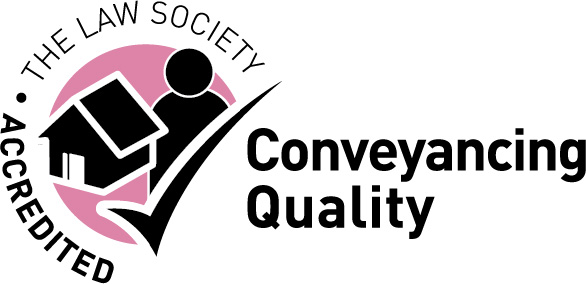Can a grievance amount to a whistleblowing disclosure?
3 September 2019
Many readers will be familiar with receiving and dealing with grievances, but could you spot a whistleblowing disclosure? It is often the Bursar or the Head who are appointed to chair the grievance meeting and governors become involved later in the process.
The contents of a grievance can, depending on the specific facts, also amount to a whistleblowing disclosure, referred to throughout this article as a "protected disclosure".
It is important that the person dealing with the grievance reads the contents carefully to identify whether any of the complaints could amount to a protected disclosure. We regularly advise school clients on the appropriate way to deal with complaints and whether this should be under a Grievance or Whistleblowing Policy.
The risks of the worker bringing a whistleblowing claim should also be considered at the outset: this could be a claim that they were (a) dismissed from their role and/or (b) subjected to a detriment on the grounds that they made a protected disclosure. Whistleblowing claims can be brought by workers at any stage of their engagement - they do not need to have worked at the school for any minimum period.
Grievances give schools the opportunity to intervene and resolve issues before they escalate into something more serious, such as an Employment Tribunal claim. It is important, therefore, to deal with the contents of a grievance correctly so that, if required, you are best placed to defend any potential action taken by the worker in an Employment Tribunal or by a regulatory body.
What is a protected disclosure?
In order to make a protected disclosure, a worker must show the following:
- There has been a disclosure of information.
The disclosure can be made verbally or in writing. But the worker cannot simply voice a concern or raise an allegation. In the case of Cavendish Munro Professional Risks Management Ltd v Geduld [2010], the Employment Appeal Tribunal (EAT) explained that giving information "is conveying facts".
The presiding judge gave a hypothetical example based on a hospital. Stating "the wards have not been cleaned for the past two weeks, sharps were left lying around" would be communicating information. However, stating "you are not complying with health and safety requirements" is an allegation which is unlikely to amount to a disclosure of information as it is too general and devoid of any specific facts.
You should not try to classify the disclosure as either (a) an allegation or (b) communicating information. It will depend on the facts of each case and there can be situations where an allegation contains information and vice versa, so be careful not to write off the contents of a grievance too quickly.
When reading a grievance, you should ask yourself the question: is this a disclosure of information - does it convey sufficient facts and specificity? If so, consider whether the worker meets the other hurdles (see below).
- The disclosure, in the reasonable belief of the worker, tends to show one or more of six types of wrongdoing is taking place (or is likely to take place).
The six types of wrongdoing are as follows:
(a) Criminal offences;
(b) Breach of any legal obligation;
(c) Miscarriages of justice;
(d) Danger to the health and safety of any individual;
(e) Damage to the environment;
(f) The deliberate concealing of information about any of the above.
The worker will have a 'reasonable belief' in the wrongdoing if:
- they subjectively believe that the wrongdoing is taking place (or is likely to take place); and
- in the tribunal's view, their belief is objectively reasonable.
- The worker reasonably believes that the disclosure is in the public interest.
If the worker genuinely believed the disclosure was made in the public interest and the tribunal concludes this belief was objectively reasonable, then the worker will be able to show they had a 'reasonable belief'.
If the disclosure is about the worker's own position and has no public interest element, then it will fall at this hurdle and will not amount to a protected disclosure.
This is for an Employment Tribunal to decide and the following four factors may assist in their decision making:
(a) The number of people whose interests are affected by the disclosure.
For example, a breach of contract disclosure that affects all teachers' contracts may point to the disclosure being in the 'public interest'.
(b) The nature of the interests affected and the extent to which they are affected by the wrongdoing disclosed.
If the disclosure directly affects an important interest (such as a concerning safeguarding culture) then this is more likely to be in the public interest, as opposed to a wrongdoing which is of more marginal application.
(c) The nature of the alleged wrongdoing disclosed.
If the wrongdoing is deliberate, it is more likely to be in the public interest.
(d) The person who is accused of the wrongdoing.
The larger or more prominent the wrongdoer, the more likely the disclosure about their activities will engage the public interest.
- The worker made the disclosure to one of the following persons/bodies:
(a) The worker's employer
(b) The person responsible for the wrongdoing
(c) Legal advisers
(d) Government ministers
(e) A prescribed person
(f) A person not listed above (provided certain conditions will be made).
Where a grievance is made to the employer, it is likely this hurdle will be met. As you will wish to deal with any protected disclosure internally it is important to have a Whistleblowing Policy in place, which requests that staff follow that policy and first seek to deal with matters internally.
What should I do if I am concerned a grievance could contain a protected disclosure?
- Follow the school's Whistleblowing Policy.
This will provide additional guidance on the steps you should be taking (if the assessment is that this is, or is likely to be, a protected disclosure). There might be certain differences in the procedures for dealing with either grievances or protected disclosures.
- Take prompt action to investigate the complaint.
Ensure that the person investigating the complaint has the skills to do so, or provide training if additional support is required. If you do not have an appropriate member of staff to investigate, consider engaging an independent HR advisor.
The investigation should be robustly investigated to show that the school takes complaints seriously (whether the grievance amounts to a protected disclosure or not) and that action is taken to look into issues when they are raised.
Delay or inaction can result in the worker feeling as if the school is not taking their disclosure seriously. This can lead to further complaints, or the worker reporting their concerns elsewhere which could have adverse PR implications for the school.
- Consider separating out the grievance(s) from the protected disclosure(s).
Workers will rarely specify which complaints they believe amount to a protected disclosure. We recommend separating out each complaint; identifying those that amount or are likely to amount to a protected disclosure and for the school to investigate each one. This will also help with the assessment of any possible legal risk.
- Ask the worker what their desired outcome is.
With grievances and protected disclosures alike, it is important to find out what the worker is trying to achieve by raising the issue with the school. If their concerns can be addressed through the grievance or whistleblowing process, then this is likely to resolve the issue, maintain morale and reduce the risk of employment claims.
- Take legal advice at an early stage.
Whistleblowing claims are complex. Some grievances may explicitly state that they are making a protected disclosure or blowing the whistle, whereas others will be less obvious to spot. It is important that if you have concerns you take legal advice to avoid any whistleblowing complaints being missed and to minimise the school's exposure to legal risk.
For further information or to discuss a specific matter, please contact Sophia Zand or your usual Wilson contact.



